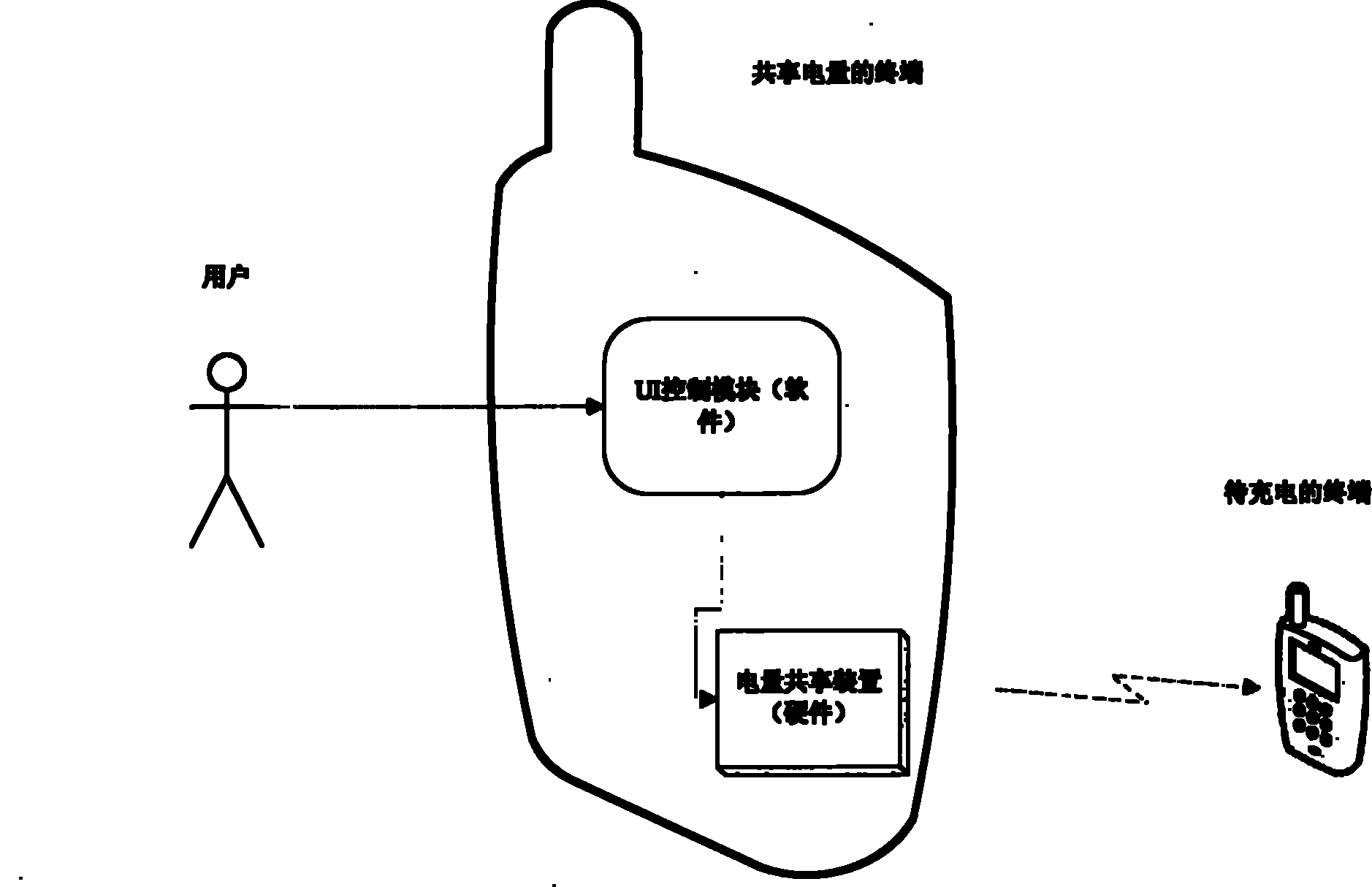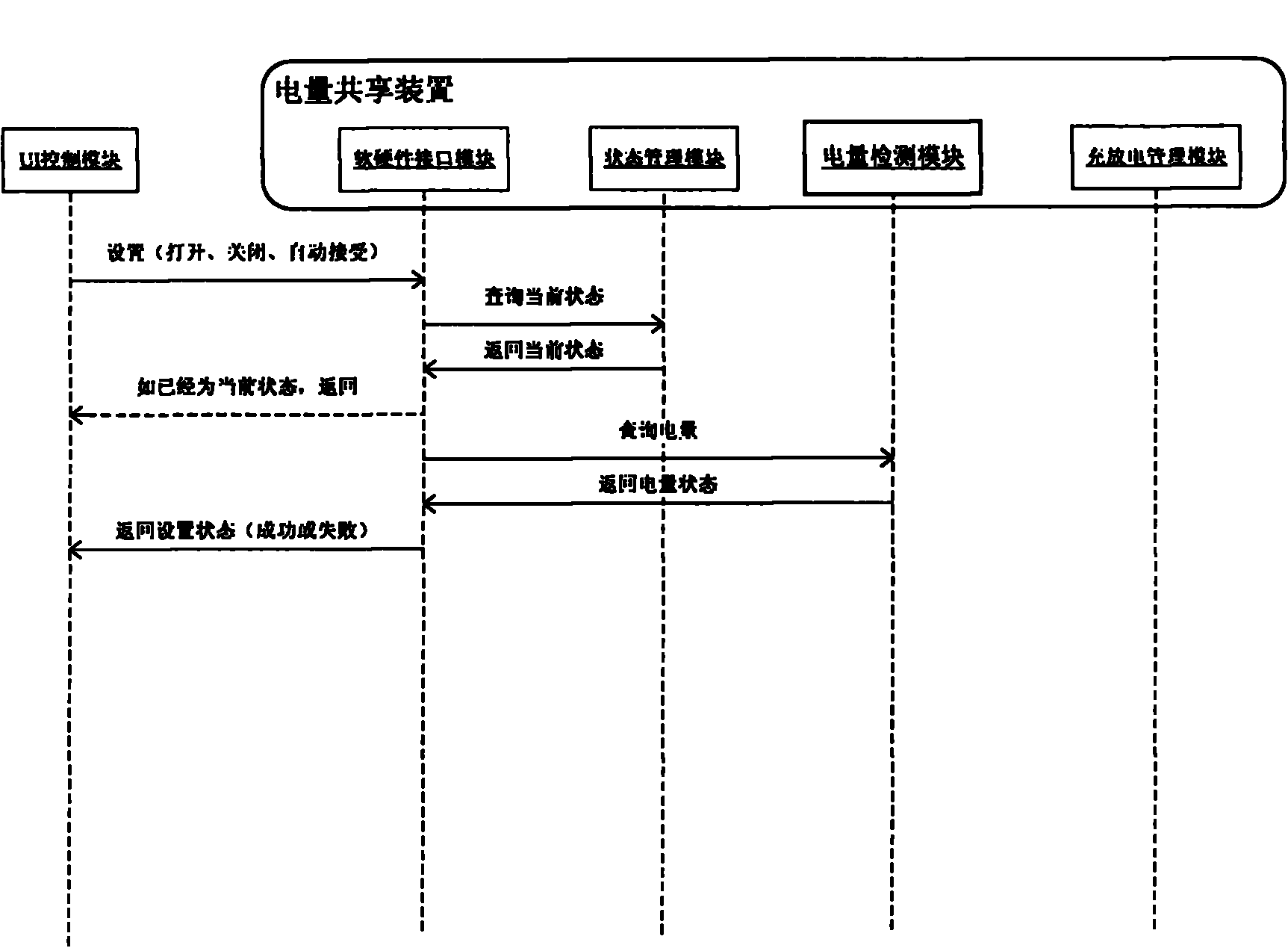Method for wireless charge between mobile terminal equipment and mobile terminal
A mobile terminal and wireless charging technology, which is applied in branch office equipment, secondary battery charging/discharging, telephone communication, etc., can solve the problems of mobile terminal charging, wireless charging and power sharing, etc., and achieve the effect of convenient user experience
- Summary
- Abstract
- Description
- Claims
- Application Information
AI Technical Summary
Problems solved by technology
Method used
Image
Examples
Embodiment Construction
[0039] The method and equipment of the present invention will be described in detail below in conjunction with the accompanying drawings.
[0040] figure 1 The basic structure of the wireless charging mobile terminal of the present invention is shown, including: a power sharing device for setting the power sharing state and performing a power sharing operation; and a UI (user operation interface) control module for sending power to the power sharing device An instruction for setting the sharing state and an instruction for confirming the power sharing operation are executed.
[0041] On the other hand, the above power sharing device and UI control module can also be set in public places as public wireless charging equipment.
[0042] figure 2 Shows the structure of the power sharing device of the present invention, such as figure 2 As shown, the power sharing device includes: an interface module that communicates with the UI control module, that is, forwards information; ...
PUM
 Login to View More
Login to View More Abstract
Description
Claims
Application Information
 Login to View More
Login to View More - R&D
- Intellectual Property
- Life Sciences
- Materials
- Tech Scout
- Unparalleled Data Quality
- Higher Quality Content
- 60% Fewer Hallucinations
Browse by: Latest US Patents, China's latest patents, Technical Efficacy Thesaurus, Application Domain, Technology Topic, Popular Technical Reports.
© 2025 PatSnap. All rights reserved.Legal|Privacy policy|Modern Slavery Act Transparency Statement|Sitemap|About US| Contact US: help@patsnap.com



